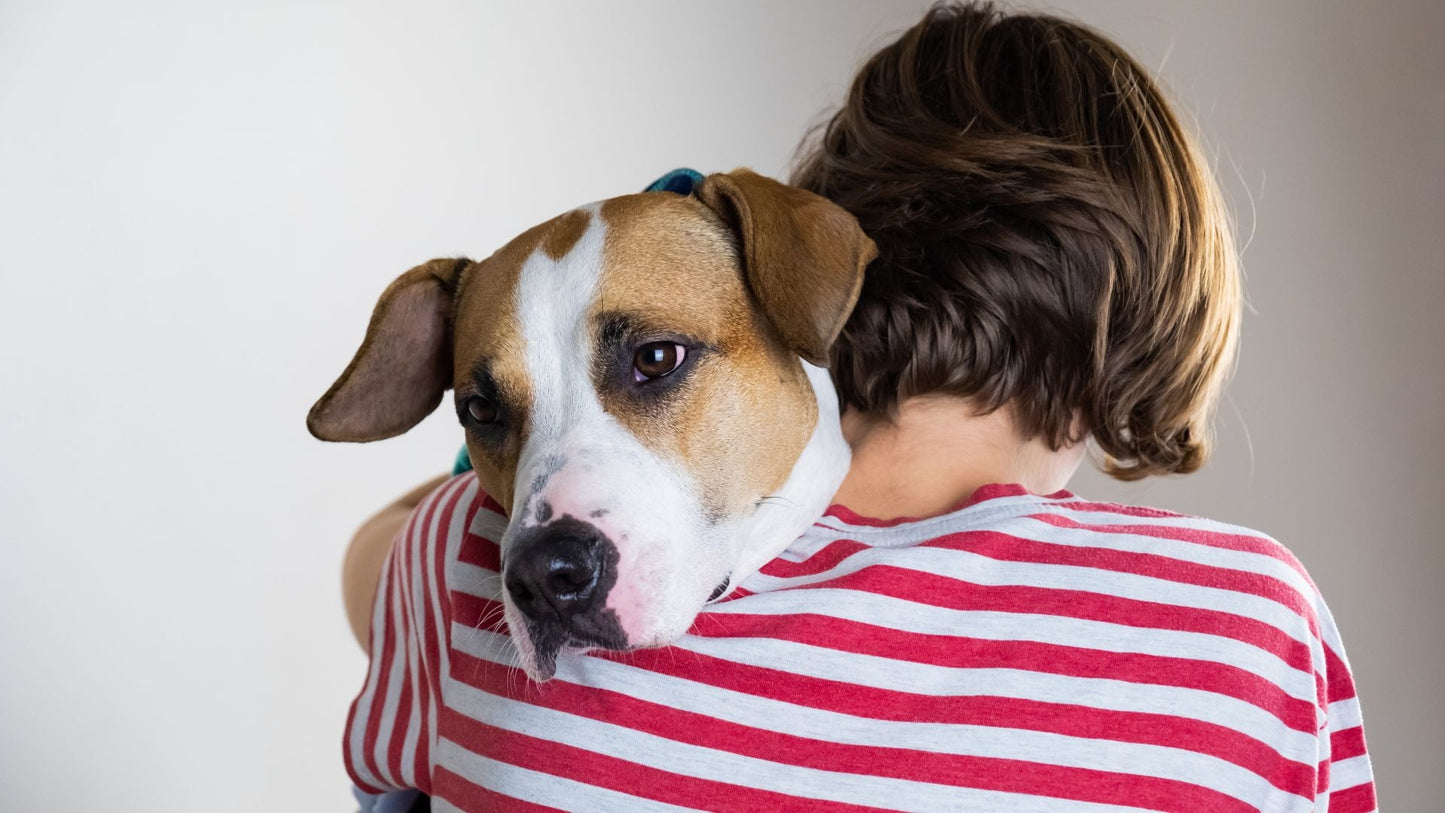
Every day, countless dogs are subjected to neglect, abuse, or abandonment. Some come from hoarding situations, others from violent homes, and many are left behind simply because they grew old, ill, or it's too much work. These animals, once full of life and trust, often retreat into fear, confusion, or even aggression, shaped by the trauma they’ve endured. But there’s hope. Many wonderful pet parents who adopt these furry babies are on a mission to change that narrative and help mistreated dogs to rediscover what it means to feel safe, cared for, and loved. And if you are reading this, chances are it's probably you!
However, helping a dog that has been mistreated adapt to a new safe home requires patience, understanding, and positive reinforcement. We'd love to share with you how you can help your new friend to make adjustments into a new life of safety and love:
Create a Safe and Calm Environment
· Establish a safe space: Designate a quiet area in your home, such as a crate or a corner with a comfortable bed, where your dog can retreat and feel secure.
· Introduce them gradually: When introducing them to their new home, start with one room and slowly allow them to explore other areas at their own pace.
· Keep the noise level low: Avoid loud or sudden noises that can startle or scare your dog.
· Use soothing tones: Speak softly and use calming tones when interacting with your dog.

Build Trust and Patience
· Be patient: Recognize that building trust and helping your dog overcome past trauma takes time, potentially months or even years.
· Consistent interactions: Engage in consistent, calm interactions to build trust and show your dog they can rely on you.
· Respect their space: Allow your dog to initiate interactions and respect their boundaries if they seem hesitant.
· Gentle handling: Use gentle handling and positive reinforcement to build trust and enhance their sense of security.
Use Positive Reinforcement and Training
· Use positive reinforcement: Reward desired behaviors with treats, praise, or toys to build confidence and create positive associations.
· Avoid punishment: Do not use punishment, as it can reinforce fear and harm the trust-building process.
· Teach basic commands: Start with simple obedience commands like "sit" and "stay" to establish a foundation for communication and build confidence.
· Be consistent with training: Ensure all family members use the same commands and rewards for consistency.

Address Specific Fears and Socialization
· Identify triggers: Observe your dog's behavior to identify what triggers their fear or anxiety.
· Gradual exposure (desensitization): Introduce the dog to their fears in a controlled environment, starting with a low level of exposure and gradually increasing it as they become more comfortable.
· Counter-conditioning: Pair fear-inducing stimuli with positive experiences (e.g., treats) to change the dog's emotional response.
· Gradual socialization: Slowly introduce your dog to new people and other pets in controlled, positive environments.
Other Important Considerations
· Establish a routine: Consistent daily schedules for feeding, walks, and rest help reduce anxiety and build trust.
· Provide exercise and mental stimulation: Regular physical activity and interactive toys help burn off nervous energy and promote well-being.
· Consult a professional: If your dog displays severe anxiety, aggression, or fear, seek guidance from a positive-reinforcement-based trainer or animal behaviorist.
· Be aware of health issues: Mistreated dogs rescued from neglect may have underlying health problems. Arrange a veterinary check-up and address any health concerns.
A Path Toward Recovery
The journey from fear to trust isn’t a straight line for mistreated dogs. But at Bark, Meow, ‘N Beyond, we believe that every tail wag, every tentative paw forward, matters. By giving anxious, mistreated dogs tools that support their emotional well-being, we’re helping lay the foundation for a better life.

If you’re caring for a rescue pup with a painful past, know that healing takes time, and the right pet parent might just be the first step toward hope. 🐾
If you’re the guardian of a mistreated pet whether rescued from abuse, neglect, or abandonment know that your love is already a powerful part of their healing. Every act of kindness, every moment of patience, and every effort to rebuild trust matters more than words can express. These animals may carry emotional scars, but with consistency and compassion, they can learn to feel safe again.
You are their hero not just because you saved them, but because you stayed when it was hard. The bond you’re creating is built on trust earned over time, and it’s one of the most rewarding relationships you’ll ever experience. You are not alone in this. Bark, Meow, ‘N Beyond is here to assist you. Many others walk the same path, and support is always within reach through vets, trainers, online communities, and rescue organizations.
Keep going. Every small victory every tail wag, purr, or playful moment is a testament to your dedication. You are rewriting the story of an animal who once knew fear and now knows love. And that is something truly extraordinary. Thank you for being the person your pet needed most. The journey is worth it because so are they!

For more pet support and information on how to care for your friend go to the Animal Services of El Paso website.
